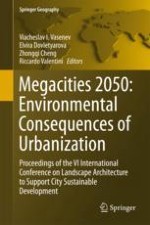2018 | OriginalPaper | Chapter
Chemodiagnostic by Lipid Analysis of the Microbial Community Structure in Trace Metal Polluted Urban Soil
Authors : V. A. Terekhova, N. V. Verkhovtseva, M. A. Pukalchik, I. R. Vodolazov, V. K. Shitikov
Published in: Megacities 2050: Environmental Consequences of Urbanization
Publisher: Springer International Publishing
Activate our intelligent search to find suitable subject content or patents.
Select sections of text to find matching patents with Artificial Intelligence. powered by
Select sections of text to find additional relevant content using AI-assisted search. powered by
